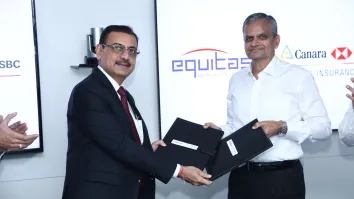Breaking barriers: Building the future of cross border payments in Southeast Asia
By Arun KiniGlobal value of cross-border payments is expected to reach $250t by 2027.
In recent years, the Asia Pacific region has experienced a remarkable surge in the development of its payment infrastructure, closely mirroring the explosive growth of its digital economy.
Factors such as increased internet penetration, widespread adoption of mobile technology, and innovative financial technologies have driven this rapid expansion, positioning Asia Pacific at the forefront of a global financial transformation.
A recent report reflected on how the global value of cross-border payments is expected to reach $250t by 2027, presenting a significant opportunity for Southeast Asia.
However, to fully capitalise on this potential, there is continued pressure to modernise payment infrastructures within local markets to accelerate cross-border integration efforts. The goal is to create a cohesive, efficient, and robust regional financial ecosystem to drive economic growth and enhance financial inclusion throughout the region.
The current state of play in Southeast Asia
Traditionally, cash and traditional banking methods dominated transactions in Southeast Asia. However, the region is rapidly embracing digital payments due to the increasing demand for mobile wallets, e-commerce platforms, and peer-to-peer payment systems.
This shift offers greater convenience and accessibility to consumers across urban and rural areas. Governments and financial institutions are also investing heavily in infrastructure upgrades and regulatory frameworks to support this digital shift.
To meet this growing demand, Southeast Asia has rolled out several initiatives to streamline transactions and establish a strong, interconnected payment system.
For example, Project Nexus aims to revolutionise cross-border payments by creating a unified, efficient, and interoperable payment infrastructure across the region. The project addresses critical challenges such as disparate regulatory frameworks and varying technological standards by fostering collaboration amongst financial institutions, regulators, and technology providers.
Similarly, the ASEAN Regional Payment Connectivity (RPC) initiative focuses on creating standardised frameworks and interoperable systems to streamline transactions, reduce costs, and improve the speed of cross-border payments.
Additionally, Southeast Asian countries are working to migrate to the global ISO 20022 standard, which offers enhanced clarity, consistency, and interoperability for electronic data interchange in the financial services sector.
This migration bolsters ASEAN's competitiveness in the global financial market and paves the way for smoother, more secure, and transparent cross-border payments within the region. Despite these collective efforts, several critical challenges still need to be addressed.
Overcoming hurdles for meaningful progress
Many financial institutions in Asia still rely on outdated legacy payment systems that are not equipped to handle the volume, velocity, and complexity of modern payment requirements.
These systems struggle to meet the demands for speed, transparency, accuracy, and security across the payments supply chain, hindering banks' ability to keep pace with the rapid digital transformation driven by regulatory mandates like ISO 20022 and the emergence of instant and alternative payment rails.
A lack of interoperability between cross-border solutions and domestic instant payment rails exacerbates the challenge of seamless international transactions.
This gap leads to inefficiencies, delays, and increased costs in processing cross-border transactions. Managing multiple correspondent banking relationships and maintaining KYC requirements with various banks further amplifies friction in traditional cross-border payment methods.
Financial institutions and businesses engaged in cross-border payments face diverse regulatory environments, slow processing times, lack of visibility in bank service fees, foreign exchange fluctuations, and sophisticated fraudulent activities. These challenges add significant operational complexity, making it difficult to deliver cross-border payment experiences that add value and meet customers' evolving needs.
Fragmentation in compliance requirements, differing security protocols, and varied approaches to anti-money laundering increase operational costs and hinder the efficiency and speed of transactions.
The future of payments
The modernisation of cross-border payment infrastructures will focus on enhancing accessibility, inclusivity, and personalisation of financial services. Emerging technologies like artificial intelligence (AI) and distributed ledger technology (DLT) are already being implemented in scalable solutions to meet these goals.
For example, Finastra's payments software leverages AI to pre-emptively identify and correct potential errors in payment settlement transactions before they cause major disruptions.
By reducing delays and minimising the chances of transaction failure, Finastra’s AI-driven solutions significantly improve the speed, accuracy, and reliability of cross-border payments. This not only fosters greater trust amongst financial institutions and users but also contributes to developing a more resilient and adaptive payment ecosystem.
Additionally, integrating with a more diverse pool of fintechs and partners to incorporate value-added services will play a crucial role in shaping the future payment landscape in an Open Finance environment.
Ultimately, building a more efficient, interconnected, and secure cross-border payment infrastructure will drive economic growth and financial inclusion across Southeast Asia, solidifying its position as a dynamic hub in the global financial ecosystem.


















 Advertise
Advertise










